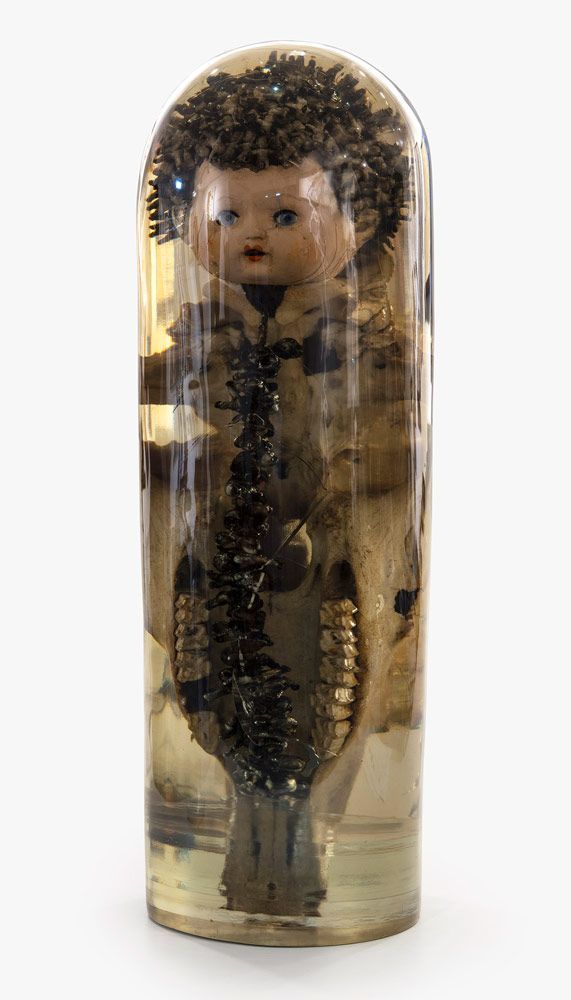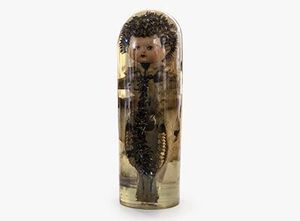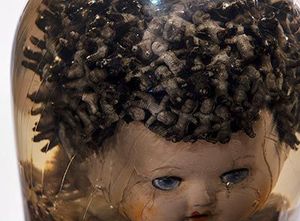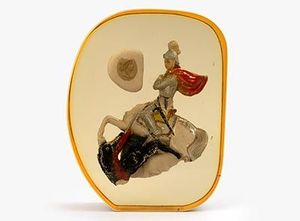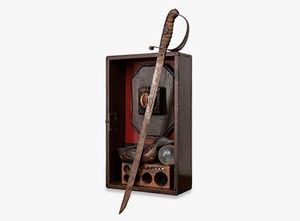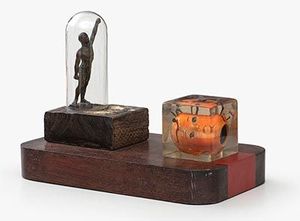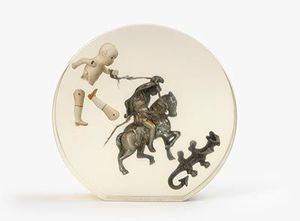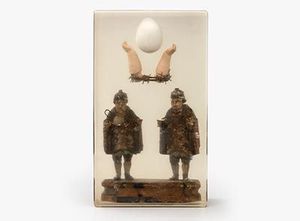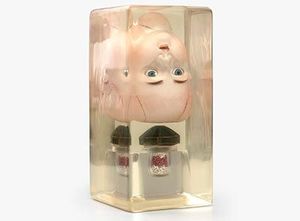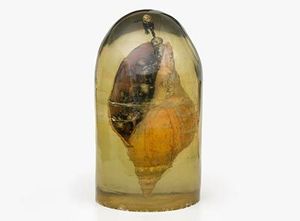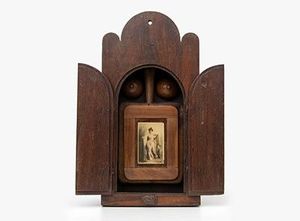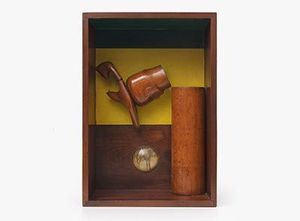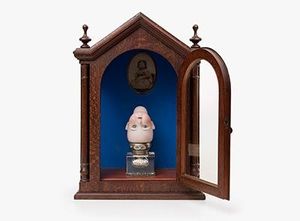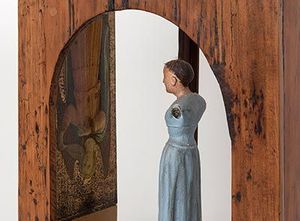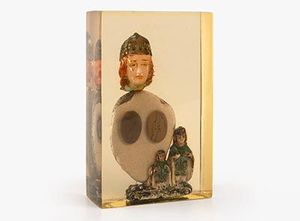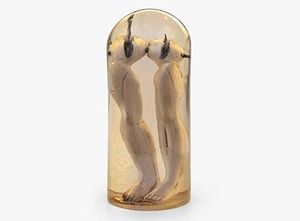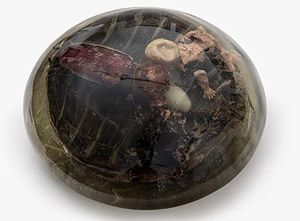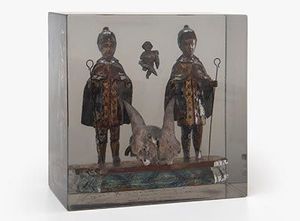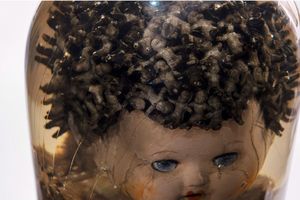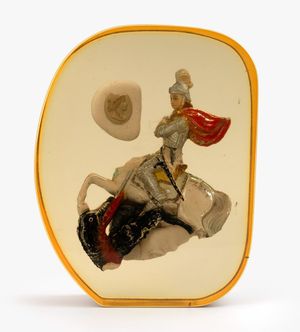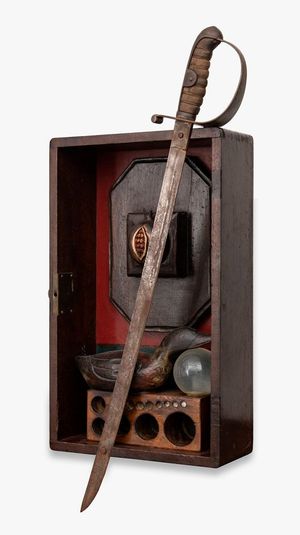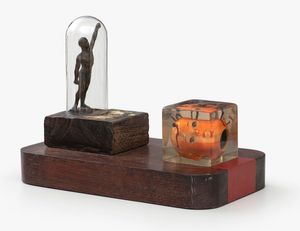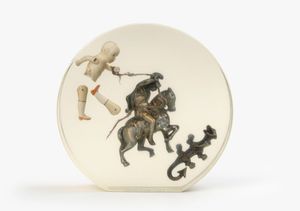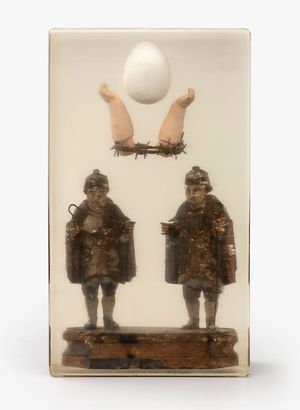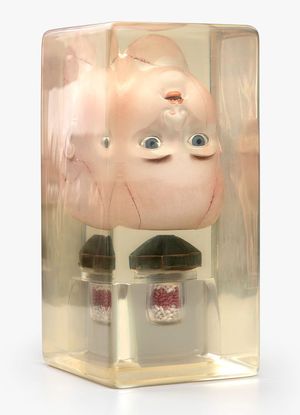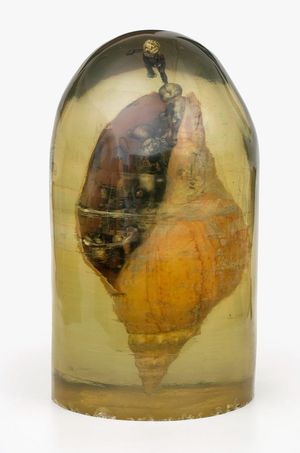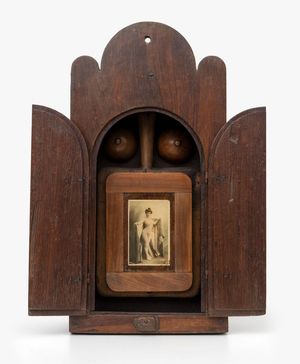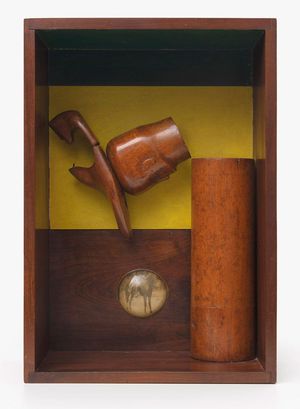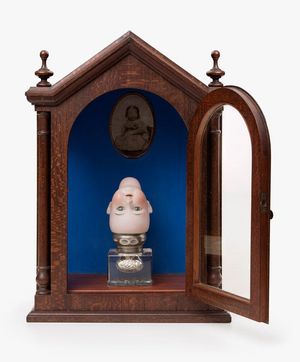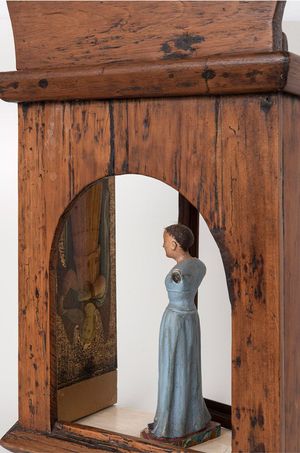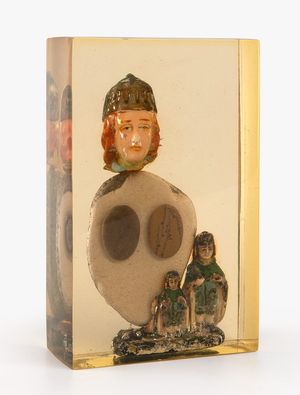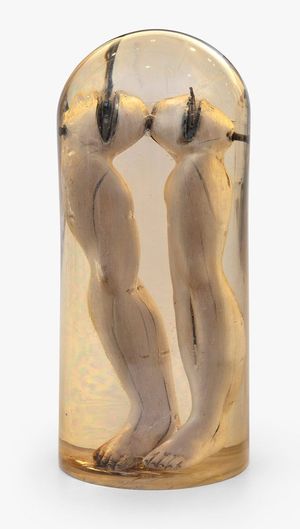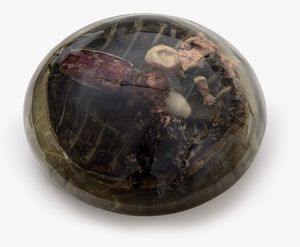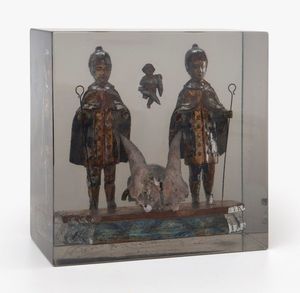Throughout his career, Farnese de Andrade has moved between different media, focusing mainly on sculpture and assemblage, but also on painting, illustration and engraving. The artist was born in Araguari, a small town in Minas Gerais, and was the sixth child of eight siblings. His childhood was marked by the tragic death of two of his older brothers, whom Farnese never met, but who were present in family stories and memories. The artist spent his youth in Belo Horizonte and then in Rio de Janeiro, where he sought treatment for tuberculosis. Still in Belo Horizonte, he had his first contact with art, studying drawing at Escola Parque with Alberto da Veiga Guignard. In the 1950s and 1960s, he met Ivan Serpa and other concretist artists, began to participate in Art Salons and took part in the 6th edition of the Bienal de São Paulo (1961).
Farnese de Andrade's work is known for the artist’s unique way of collecting and organizing objects, which makes him a solitary figure among his contemporaries in the Brazilian artistic context. Initially working with engraving, in the mid-1960s Farnese began to produce assemblages from unusual objects such as dolls' heads and bodies, sacred images, ex-votos [votive objects], photographs and all kinds of artifacts found or bought in antique shops. When superimposing these vestiges - marked by time and use - he adds resins, glass domes, magnifying glasses, colonial furniture, cabinets, oratories and reliquaries. Farnese de Andrade's poetics have an autobiographical feel and focus on aspects of the psyche and the unconscious. His works evoke an indecipherable affective charge.
The first critical readings of Farnese's art always emphasized the inseparable relationship between his work and his biography. In this sense, the melancholy and the dense symbolism of the objects that the artist gathers and transforms is striking. The accumulation of objects and images, which characterizes the Farnesian universe, resembles a collage of memories that the artist obsessively reworks in the present. In addition, many of his assemblages allows us to perceive the provocative and potentially dangerous mixture of religiosity and eroticism, as critic Rodrigo Naves observes.
Although he didn't take part in any artistic movements, his production has made a fundamental contribution to the history of Brazilian art, finding an echo mainly in a new generation of contemporary artists in the 1980s and 1990s. Farnese de Andrade's works are part of major Brazilian public collections such as the Pinacoteca do Estado de São Paulo; Museu de Arte Contemporânea de Niterói; Museu de Arte Moderna de São Paulo – MAM SP; Museu de Arte Moderna do Rio de Janeiro – MAM Rio, Museu Nacional de Belas Artes, and international collections in prestigious institutions such as: The Museum of Modern Art - MoMA, New York, USA; Institute of Contemporary Arts, London, UK and Essex Collection of Art from Latin America, University of Essex, UK.
